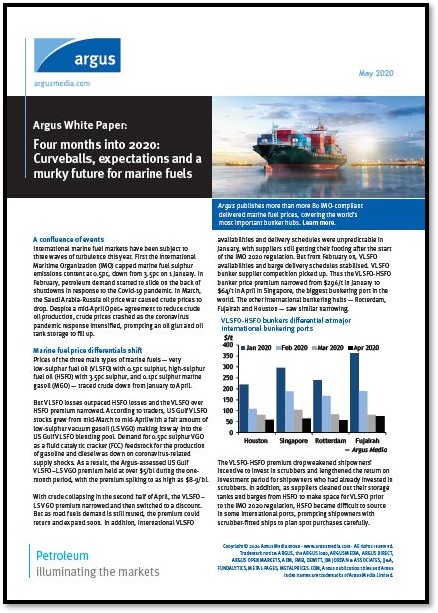A confluence of events
International marine fuel markets have been subject to three waves of turbulence this year. First the International Maritime Organization (IMO) capped marine fuel sulphur emissions content at 0.5pc, down from 3.5pc on 1 January. In February, petroleum demand started to slide on the back of shutdowns in response to the Covid-19 pandemic. In March, the Saudi Arabia-Russia oil price war caused crude prices to drop. Despite a mid-April Opec+ agreement to reduce crude oil production, crude prices crashed as the coronavirus pandemic response intensified, prompting an oil glut and oil tank storage to fill up.
Marine fuel price differentials shift
Prices of the three main types of marine fuels — very low-sulphur fuel oil (VLSFO) with 0.5pc sulphur, high-sulphur fuel oil (HSFO) with 3.5pc sulphur, and 0.1pc sulphur marine gasoil (MGO) — traced crude down from January to April. But VLSFO losses outpaced HSFO losses and the VLSFO over HSFO premium narrowed. According to traders, US Gulf VLSFO stocks grew from mid-March to mid-April with a fair amount of low-sulphur vacuum gasoil (LS VGO) making its way into the US Gulf VLSFO blending pool. Demand for 0.5pc sulphur VGO as a fluid catalytic cracker (FCC) feedstock for the production of gasoline and diesel was down on coronavirus-related supply shocks. As a result, the Argus-assessed US Gulf VLSFO–LS VGO premium held at over $5/bl during the one month period, with the premium spiking to as high as $8-9/bl.
Read the full complimentary white paper, simply by filling up the form.
